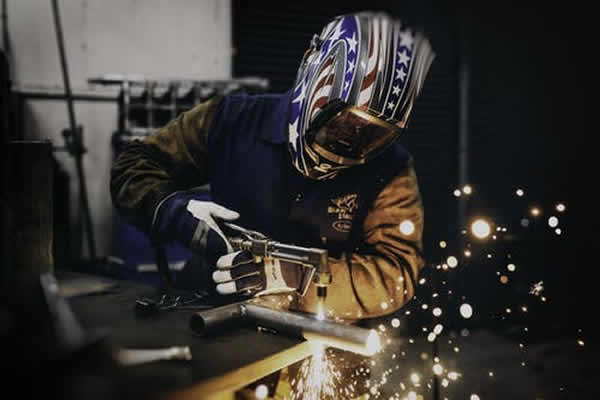Since earlier than 1500 BC, metals such as iron have been used to create a wide range of structures, from building frames to equipment, tools, accessories, and everything in-between. However, it was not until the late nineteenth century (1881) that welding was discovered, and the scale of things you could create with iron and other metals became literally explosive.

Now, let’s stick with the welding process for a minute. Today, we depend on the fabrication process to make our lives easier in many ways. Did you know that there are three main types of welding depending on which materials are used and how the process takes place? In case you’re wondering, read on to distinguish between the three different types of welding.
What Exactly Is Welding?
By definition, welding is simply the process by which two or several parts of materials (usually metal) are joined together using heat, melting, and cooling. The welded joint is sometimes called a weldment. There are actually many different types of welding processes, with four being the most common. The most important types are TIG, MIG, and Stick welding, which we shall discuss briefly below. Other welding types include:
- Atomic Hydrogen welding
- Flux-cored arc welding
- Energy beam welding
- Gas tungsten welding
- Plasma arc welding
- MIG Welding
- MIG welding is also called GMAW welding. The acronym stands for metal inert gas welding, where a thin uncoated wire is used as an electrode to transfer heat to the welding site. The thin wire basically runs through the welding machine, where it is heated as it makes its way to the welding spot.
- MIG welding can be done in two ways: with gas (MIG) or without gas (Gasless) (flux core). Gasless MIG is less expensive in terms of equipment, but it is more expensive in terms of supplies. This technique of welding necessitates the use of more expensive wires. On the other hand, gas MIG is more complicated, but the wire is less expensive and the lines produced are cleaner.
- TIG Welding
- Instead of a thin wire, a short and sharpened tungsten rod is used as the electrode in TIG welding. The TIG torch connection bears pressurized inert gas (usually argon), which shields the arc region during the entire process.
- As a result, the electrode itself isn’t consumed as it melts the metals being welded. Rather, it is used as a means to strike and maintain the arc as the metals are being fused. Despite producing great quality welds, TIG welding requires a great deal of mastery and experience. The operator has to observe dexterity in how they handle the torch, control heat levels, and feed the rods, striking at just the right time.

- Stick Welding
- Sometimes called Shielded Metal Arc Welding or SMAW, stick welding is another common type of welding used as an alternative to TIG and MIG. It is often used for outdoor welds, thanks to its renowned resistance to the effects of the wind. The stick welding electrodes are covered with a layer of flux, which melts during the process to protect the weld pool from environmental contamination. The flux layer virtually serves the purpose of the shielding gas used in MIG and TIG welding. It is easier to master stick welding, plus you can comfortably work with rusted metals in stick welding.
Welding is a huge and diverse topic. There are many different ways to fuse metals together, but some are obviously more common. Hopefully, the above few points have taught you a thing or two about the three most-popular welding processes of today.
